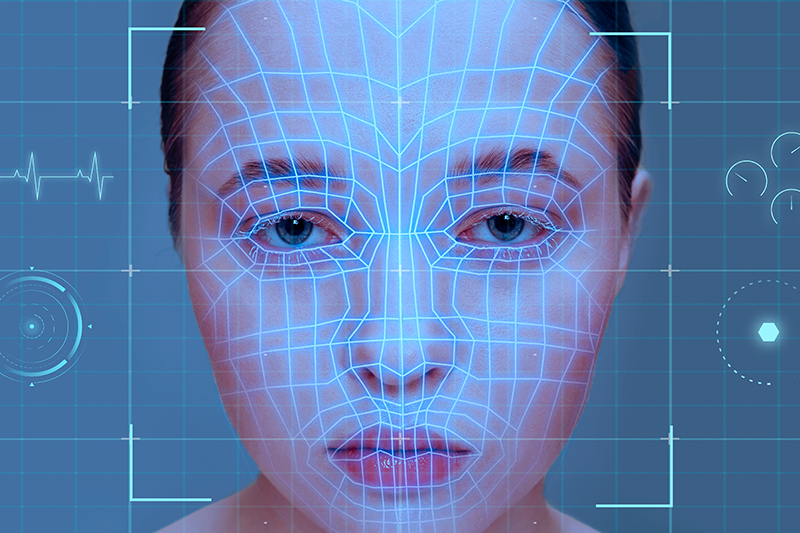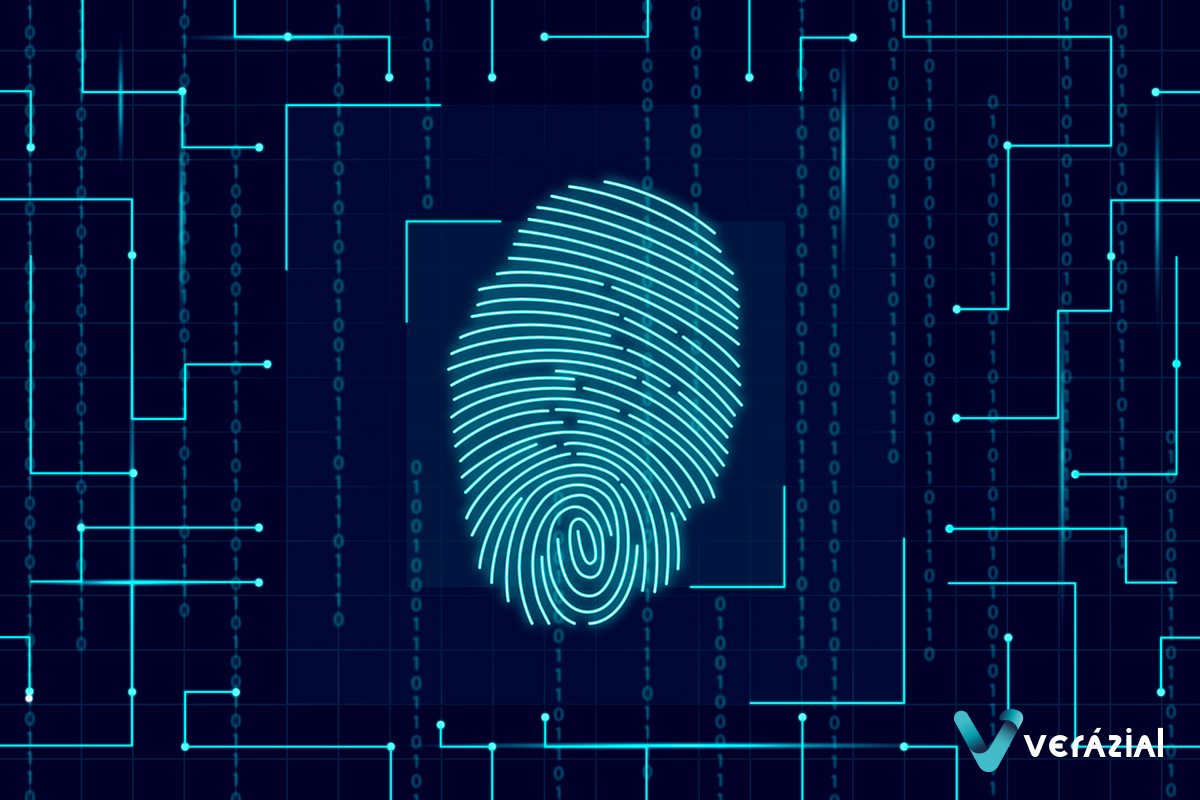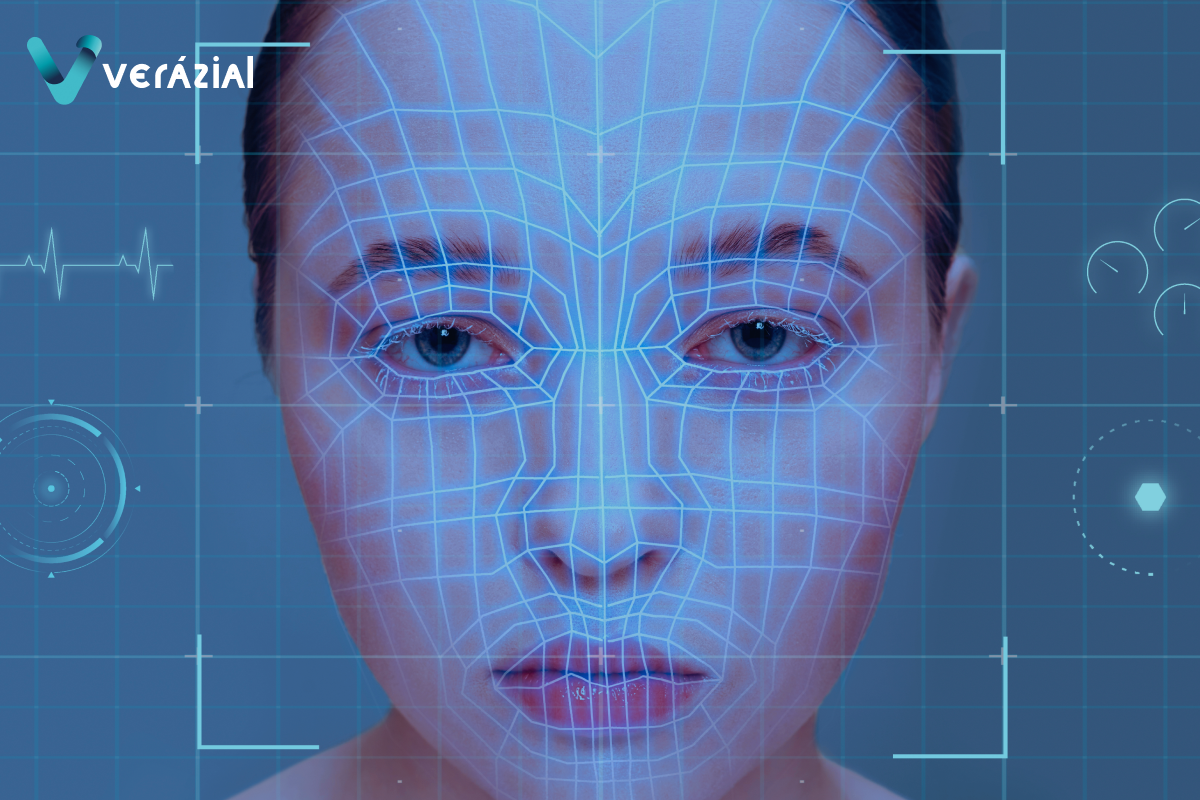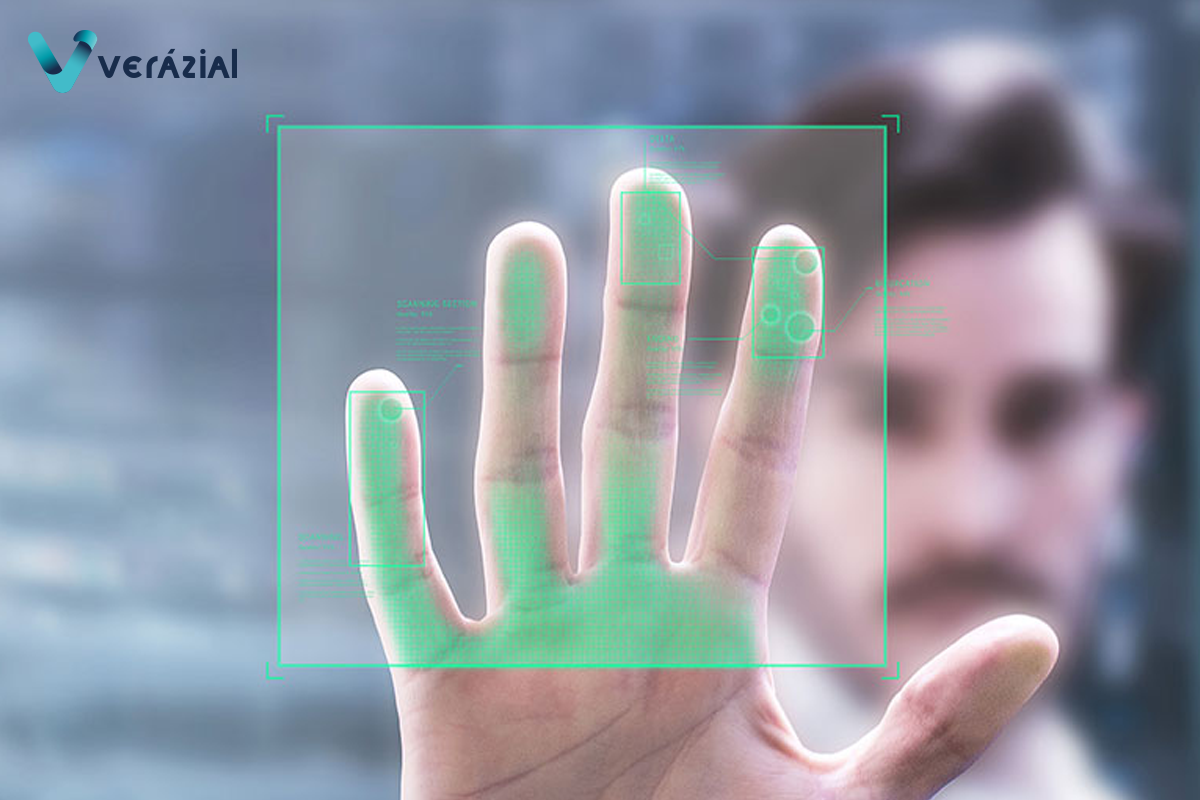Biometrics and security: Answers to the Frequently Asked Questions about its use and its impact today
Biometrics has become an essential technology for identification and authentication, ensuring security and efficiency in multiple sectors. Although its adoption has grown, there are still doubts about its operation and benefits, as well as myths surrounding its current application.
Biometrics has emerged as one of the most revolutionary technologies in the recent years, transforming the way people and businesses manage security and identification. From facial recognition on mobile devices to advanced identity verification systems in sectors such as banking, healthcare and government security, biometrics has gone from being a futuristic technology to an everyday tool.
In a highly digitized world, the need for secure, fast and efficient authentication methods has become critical. Thanks to integration with artificial intelligence and machine learning, biometric systems have evolved to offer reliable solutions in a variety of environments.
How does biometrics work?
Biometrics is the study and analysis of the physical and behavioral characteristics of individuals for identification and authentication. Biometric systems work in three main phases:
- Biometric data capture: A unique characteristic of the individual, such as a fingerprint or facial pattern, is recorded.
- Storage and processing: The captured data is converted into a digital code and stored in secure databases.
- Comparison and verification: When the user attempts to access a system, their biometrics are compared with stored records to determine their authenticity.
Main types of biometric technologies
- Facial recognition: Uses unique face patterns for identification.
- Fingerprint: Analyzes the ridges and valleys on the fingertips.
- Iris recognition: Examines unique patterns in the eye’s iris.
We invite you to read the following articles to learn about each of these technologies in detail:
Questions and the reality about biometrics
Despite being at the forefront of technological innovation, biometrics continues to generate doubts and misperceptions. Although its use has become widespread in everyday life, many people are still unaware of its operation and benefits. Below, we clarify some of the most common misconceptions and explain the reality behind this technology.
Does biometrics guarantee highly accurate authentication?
Fact: Biometrics is one of the most accurate and reliable forms of authentication available. Technologies such as iris recognition and fingerprint recognition allow for an exceptional level of security. Even under varying conditions, advances in artificial intelligence have optimized the adaptive capabilities of these systems, ensuring consistent and secure performance in user identification.
Is biometrics always more secure than other authentication methods?
Fact: Biometrics provides a higher level of security than other authentication methods, offering a reliable system that is difficult to breach. Advanced technologies such as iris, fingerprint and facial recognition have evolved through the use of artificial intelligence, ensuring greater accuracy and adaptability in a wide variety of environments.
Is biometrics expensive and only accessible to large enterprises?
Fact: While some advanced biometric technologies can be expensive, options such as facial and fingerprint recognition have become accessible to companies of all sizes. The proliferation of affordable sensors and biometric software has facilitated their adoption.
Do biometric technologies invade people’s privacy?
Fact: When implemented correctly, biometric systems can be very secure and privacy friendly. The storage and transmission of biometric data is subject to strict regulatory frameworks, such as GDPR, to ensure that personal data is adequately protected.
Is biometrics only used for authentication and security?
Fact: In addition to security, biometrics are used for personalization of services, time and attendance, digital payments and healthcare, among other uses.

Biometrics today
Biometrics has experienced unprecedented advancement in recent years, driven by the growing demand for more efficient and agile security solutions across multiple industries. The combination of emerging technologies, such as artificial intelligence (AI) and machine learning, has boosted the accuracy and reliability of biometric systems, enabling more effective adaptation to dynamic environments and diverse operating conditions.
One of the most significant developments in modern biometrics has been the evolution towards contactless authentication systems, which enable real-time identity verification without the need for physical interaction. This approach has become particularly relevant in sectors such as banking, healthcare and public safety, where speed and hygiene are key factors. Contactless biometric systems have not only reduced the time required for authentication processes, but have also improved security by minimizing the risks of fraud and identity theft.
The advancement of AI and machine learning has significantly enhanced the accuracy of biometric systems. Thanks to these technologies, algorithms can analyze and recognize patterns with superior efficiency, even in scenarios with variations in lighting, capture angles or changes in the user’s appearance. This advance has been crucial in sectors where security is paramount, such as airports and government facilities, where iris biometrics remains one of the most reliable options due to its low error rate and high accuracy.
While iris biometrics is key in high-security environments, facial recognition has become a widely used technology in daily life. Its integration with mobile devices and digital platforms has facilitated its use in identity authentication, bank account access and transaction validation applications. However, its accuracy can be affected by factors such as the use of masks, glasses or changes in facial expression, which has led to a constant evolution in detection algorithms to improve its reliability.
Biometrics has not only improved security in multiple industries, but has also facilitated the digital transformation of various processes. From the elimination of passwords in digital services to access control in critical infrastructures.
As biometrics continues to evolve, its application will expand further, with innovations including integration with blockchain for greater data protection and the development of new biometric methods, such as heart rate and brain activity recognition. These advances will consolidate biometrics as one of the most relevant tools in the digitization of security and identity authentication in the coming years.
Find out how Verázial ID uses the most advanced biometric technologies to solve all the identification problems in your sector.
Contact us for a demo and/or a customized analysis.
References
- Concept of facial recognition. [Freepik]
Biometrics and security: Answers to the Frequently Asked Questions about its use and its impact today
Biometrics has become an essential technology for identification and authentication, ensuring security and efficiency in multiple sectors. Although its adoption has grown, there are still doubts about its operation and benefits, as well as myths surrounding its current application.
Biometrics has emerged as one of the most revolutionary technologies in the recent years, transforming the way people and businesses manage security and identification. From facial recognition on mobile devices to advanced identity verification systems in sectors such as banking, healthcare and government security, biometrics has gone from being a futuristic technology to an everyday tool.
In a highly digitized world, the need for secure, fast and efficient authentication methods has become critical. Thanks to integration with artificial intelligence and machine learning, biometric systems have evolved to offer reliable solutions in a variety of environments.
How does biometrics work?
Biometrics is the study and analysis of the physical and behavioral characteristics of individuals for identification and authentication. Biometric systems work in three main phases:
- Biometric data capture: A unique characteristic of the individual, such as a fingerprint or facial pattern, is recorded.
- Storage and processing: The captured data is converted into a digital code and stored in secure databases.
- Comparison and verification: When the user attempts to access a system, their biometrics are compared with stored records to determine their authenticity.
Main types of biometric technologies
- Facial recognition: Uses unique face patterns for identification.
- Fingerprint: Analyzes the ridges and valleys on the fingertips.
- Iris recognition: Examines unique patterns in the eye’s iris.
We invite you to read the following articles to learn about each of these technologies in detail:
Questions and the reality about biometrics
Despite being at the forefront of technological innovation, biometrics continues to generate doubts and misperceptions. Although its use has become widespread in everyday life, many people are still unaware of its operation and benefits. Below, we clarify some of the most common misconceptions and explain the reality behind this technology.
Does biometrics guarantee highly accurate authentication?
Fact: Biometrics is one of the most accurate and reliable forms of authentication available. Technologies such as iris recognition and fingerprint recognition allow for an exceptional level of security. Even under varying conditions, advances in artificial intelligence have optimized the adaptive capabilities of these systems, ensuring consistent and secure performance in user identification.
Is biometrics always more secure than other authentication methods?
Fact: Biometrics provides a higher level of security than other authentication methods, offering a reliable system that is difficult to breach. Advanced technologies such as iris, fingerprint and facial recognition have evolved through the use of artificial intelligence, ensuring greater accuracy and adaptability in a wide variety of environments.
Is biometrics expensive and only accessible to large enterprises?
Fact: While some advanced biometric technologies can be expensive, options such as facial and fingerprint recognition have become accessible to companies of all sizes. The proliferation of affordable sensors and biometric software has facilitated their adoption.
Do biometric technologies invade people’s privacy?
Fact: When implemented correctly, biometric systems can be very secure and privacy friendly. The storage and transmission of biometric data is subject to strict regulatory frameworks, such as GDPR, to ensure that personal data is adequately protected.
Is biometrics only used for authentication and security?
Fact: In addition to security, biometrics are used for personalization of services, time and attendance, digital payments and healthcare, among other uses.

Biometrics today
Biometrics has experienced unprecedented advancement in recent years, driven by the growing demand for more efficient and agile security solutions across multiple industries. The combination of emerging technologies, such as artificial intelligence (AI) and machine learning, has boosted the accuracy and reliability of biometric systems, enabling more effective adaptation to dynamic environments and diverse operating conditions.
One of the most significant developments in modern biometrics has been the evolution towards contactless authentication systems, which enable real-time identity verification without the need for physical interaction. This approach has become particularly relevant in sectors such as banking, healthcare and public safety, where speed and hygiene are key factors. Contactless biometric systems have not only reduced the time required for authentication processes, but have also improved security by minimizing the risks of fraud and identity theft.
The advancement of AI and machine learning has significantly enhanced the accuracy of biometric systems. Thanks to these technologies, algorithms can analyze and recognize patterns with superior efficiency, even in scenarios with variations in lighting, capture angles or changes in the user’s appearance. This advance has been crucial in sectors where security is paramount, such as airports and government facilities, where iris biometrics remains one of the most reliable options due to its low error rate and high accuracy.
While iris biometrics is key in high-security environments, facial recognition has become a widely used technology in daily life. Its integration with mobile devices and digital platforms has facilitated its use in identity authentication, bank account access and transaction validation applications. However, its accuracy can be affected by factors such as the use of masks, glasses or changes in facial expression, which has led to a constant evolution in detection algorithms to improve its reliability.
Biometrics has not only improved security in multiple industries, but has also facilitated the digital transformation of various processes. From the elimination of passwords in digital services to access control in critical infrastructures.
As biometrics continues to evolve, its application will expand further, with innovations including integration with blockchain for greater data protection and the development of new biometric methods, such as heart rate and brain activity recognition. These advances will consolidate biometrics as one of the most relevant tools in the digitization of security and identity authentication in the coming years.
Find out how Verázial ID uses the most advanced biometric technologies to solve all the identification problems in your sector.
Contact us for a demo and/or a customized analysis.
References
- Concept of facial recognition. [Freepik]
Biometrics and security: Answers to the Frequently Asked Questions about its use and its impact today
Biometrics has become an essential technology for identification and authentication, ensuring security and efficiency in multiple sectors. Although its adoption has grown, there are still doubts about its operation and benefits, as well as myths surrounding its current application.
Biometrics has emerged as one of the most revolutionary technologies in the recent years, transforming the way people and businesses manage security and identification. From facial recognition on mobile devices to advanced identity verification systems in sectors such as banking, healthcare and government security, biometrics has gone from being a futuristic technology to an everyday tool.
In a highly digitized world, the need for secure, fast and efficient authentication methods has become critical. Thanks to integration with artificial intelligence and machine learning, biometric systems have evolved to offer reliable solutions in a variety of environments.
How does biometrics work?
Biometrics is the study and analysis of the physical and behavioral characteristics of individuals for identification and authentication. Biometric systems work in three main phases:
- Biometric data capture: A unique characteristic of the individual, such as a fingerprint or facial pattern, is recorded.
- Storage and processing: The captured data is converted into a digital code and stored in secure databases.
- Comparison and verification: When the user attempts to access a system, their biometrics are compared with stored records to determine their authenticity.
Main types of biometric technologies
- Facial recognition: Uses unique face patterns for identification.
- Fingerprint: Analyzes the ridges and valleys on the fingertips.
- Iris recognition: Examines unique patterns in the eye’s iris.
We invite you to read the following articles to learn about each of these technologies in detail:
Questions and the reality about biometrics
Despite being at the forefront of technological innovation, biometrics continues to generate doubts and misperceptions. Although its use has become widespread in everyday life, many people are still unaware of its operation and benefits. Below, we clarify some of the most common misconceptions and explain the reality behind this technology.
Does biometrics guarantee highly accurate authentication?
Fact: Biometrics is one of the most accurate and reliable forms of authentication available. Technologies such as iris recognition and fingerprint recognition allow for an exceptional level of security. Even under varying conditions, advances in artificial intelligence have optimized the adaptive capabilities of these systems, ensuring consistent and secure performance in user identification.
Is biometrics always more secure than other authentication methods?
Fact: Biometrics provides a higher level of security than other authentication methods, offering a reliable system that is difficult to breach. Advanced technologies such as iris, fingerprint and facial recognition have evolved through the use of artificial intelligence, ensuring greater accuracy and adaptability in a wide variety of environments.
Is biometrics expensive and only accessible to large enterprises?
Fact: While some advanced biometric technologies can be expensive, options such as facial and fingerprint recognition have become accessible to companies of all sizes. The proliferation of affordable sensors and biometric software has facilitated their adoption.
Do biometric technologies invade people’s privacy?
Fact: When implemented correctly, biometric systems can be very secure and privacy friendly. The storage and transmission of biometric data is subject to strict regulatory frameworks, such as GDPR, to ensure that personal data is adequately protected.
Is biometrics only used for authentication and security?
Fact: In addition to security, biometrics are used for personalization of services, time and attendance, digital payments and healthcare, among other uses.

Biometrics today
Biometrics has experienced unprecedented advancement in recent years, driven by the growing demand for more efficient and agile security solutions across multiple industries. The combination of emerging technologies, such as artificial intelligence (AI) and machine learning, has boosted the accuracy and reliability of biometric systems, enabling more effective adaptation to dynamic environments and diverse operating conditions.
One of the most significant developments in modern biometrics has been the evolution towards contactless authentication systems, which enable real-time identity verification without the need for physical interaction. This approach has become particularly relevant in sectors such as banking, healthcare and public safety, where speed and hygiene are key factors. Contactless biometric systems have not only reduced the time required for authentication processes, but have also improved security by minimizing the risks of fraud and identity theft.
The advancement of AI and machine learning has significantly enhanced the accuracy of biometric systems. Thanks to these technologies, algorithms can analyze and recognize patterns with superior efficiency, even in scenarios with variations in lighting, capture angles or changes in the user’s appearance. This advance has been crucial in sectors where security is paramount, such as airports and government facilities, where iris biometrics remains one of the most reliable options due to its low error rate and high accuracy.
While iris biometrics is key in high-security environments, facial recognition has become a widely used technology in daily life. Its integration with mobile devices and digital platforms has facilitated its use in identity authentication, bank account access and transaction validation applications. However, its accuracy can be affected by factors such as the use of masks, glasses or changes in facial expression, which has led to a constant evolution in detection algorithms to improve its reliability.
Biometrics has not only improved security in multiple industries, but has also facilitated the digital transformation of various processes. From the elimination of passwords in digital services to access control in critical infrastructures.
As biometrics continues to evolve, its application will expand further, with innovations including integration with blockchain for greater data protection and the development of new biometric methods, such as heart rate and brain activity recognition. These advances will consolidate biometrics as one of the most relevant tools in the digitization of security and identity authentication in the coming years.
Find out how Verázial ID uses the most advanced biometric technologies to solve all the identification problems in your sector.
Contact us for a demo and/or a customized analysis.
References
- Concept of facial recognition. [Freepik]
You May Also Like
You May Also Like





